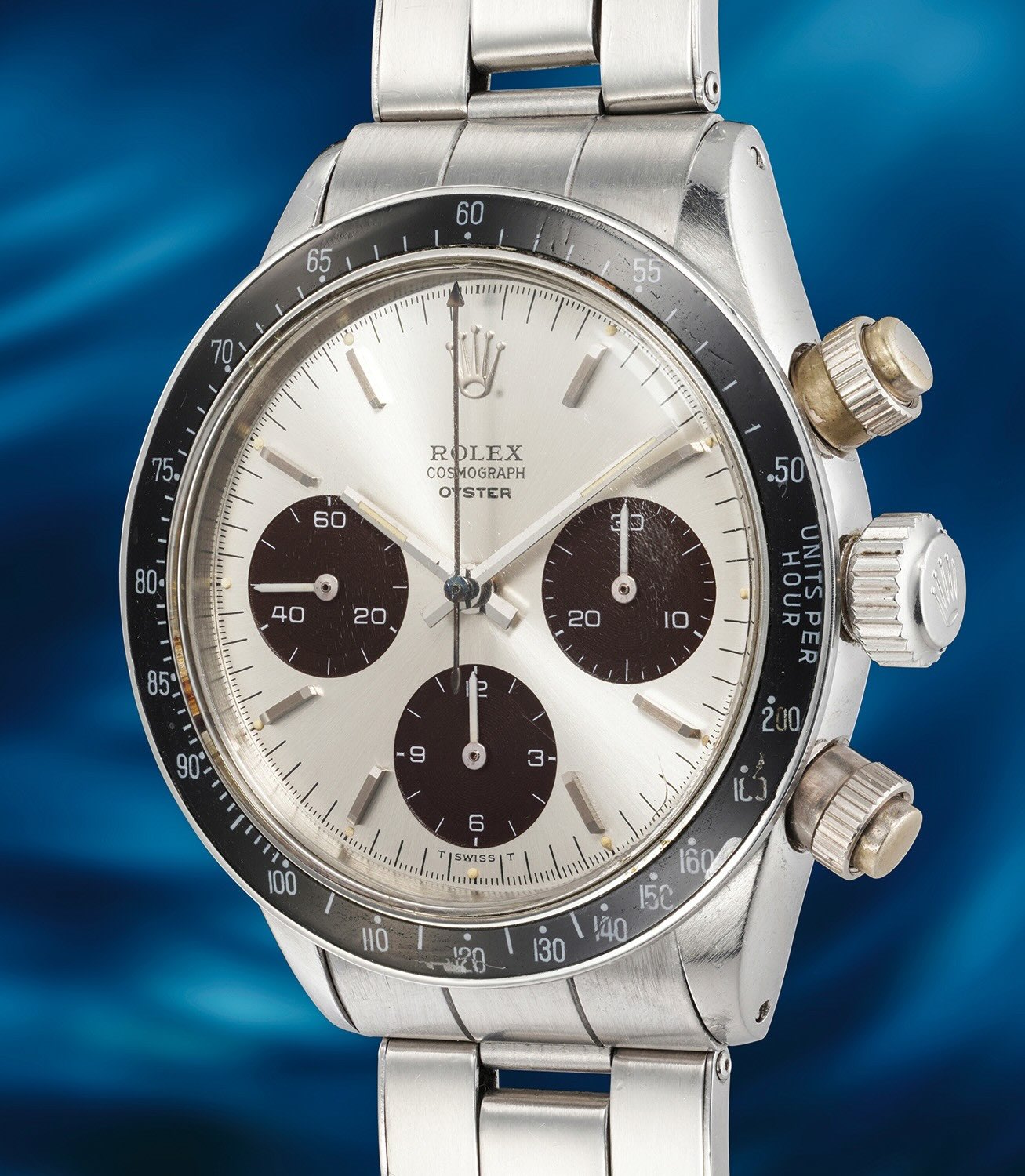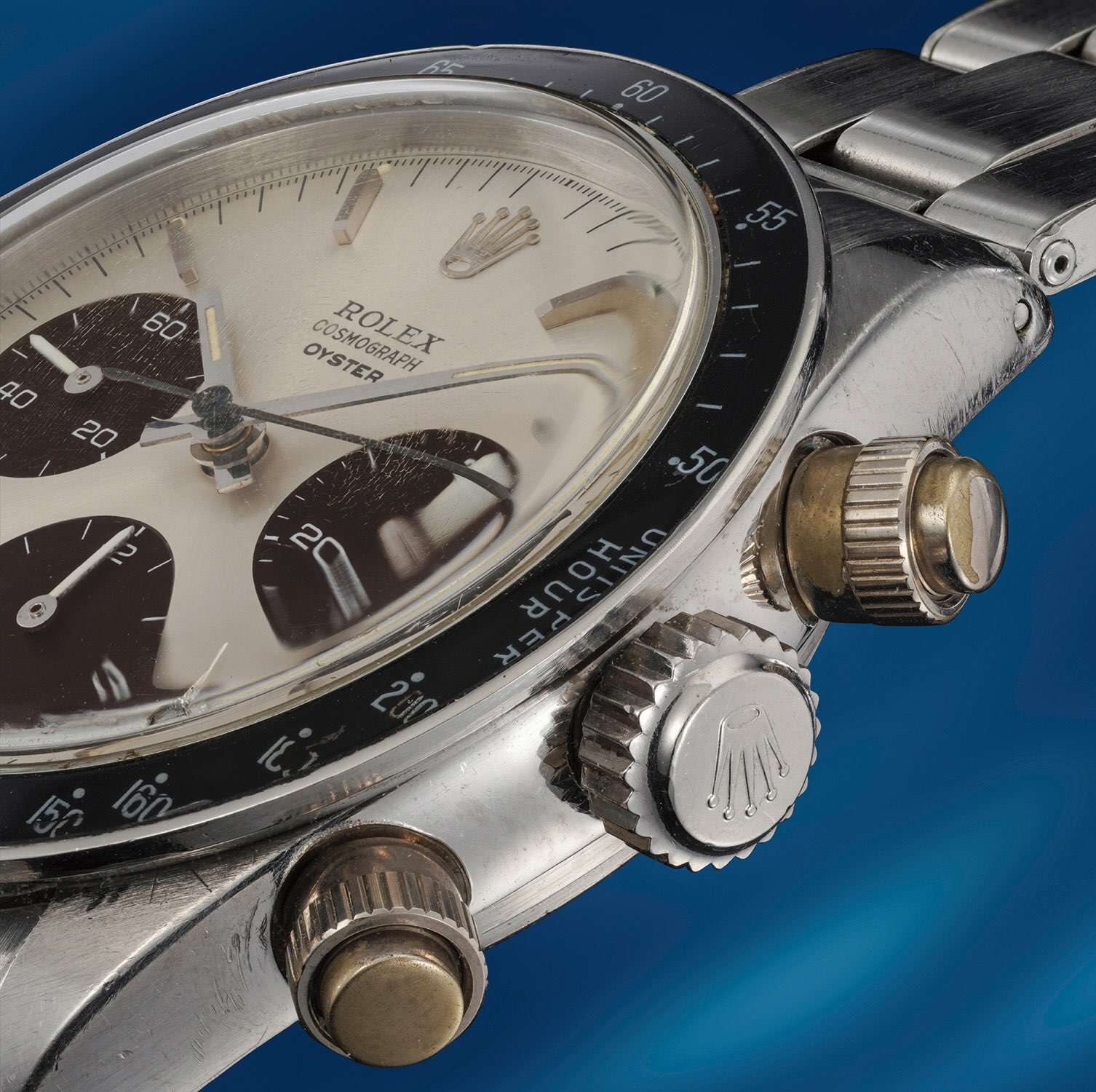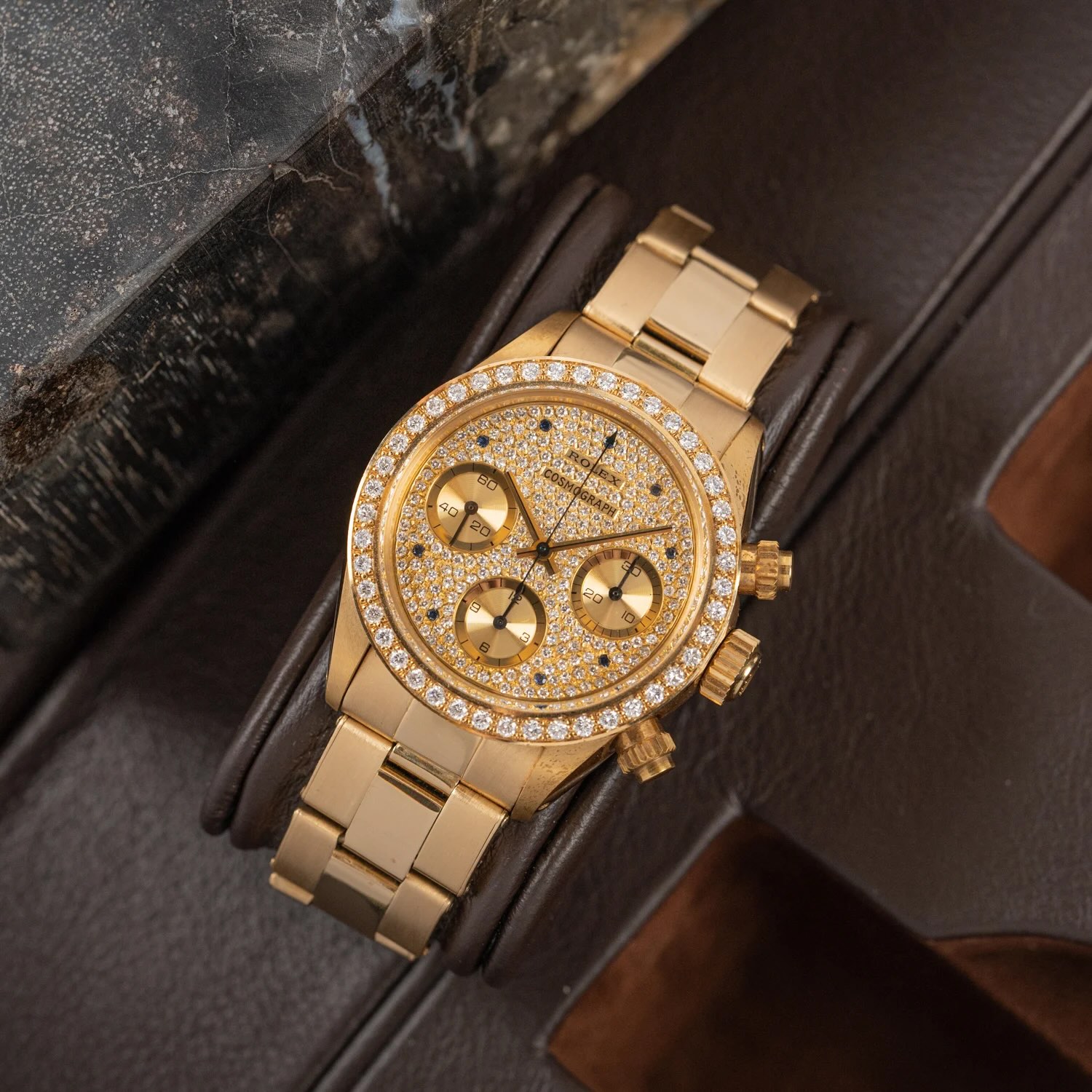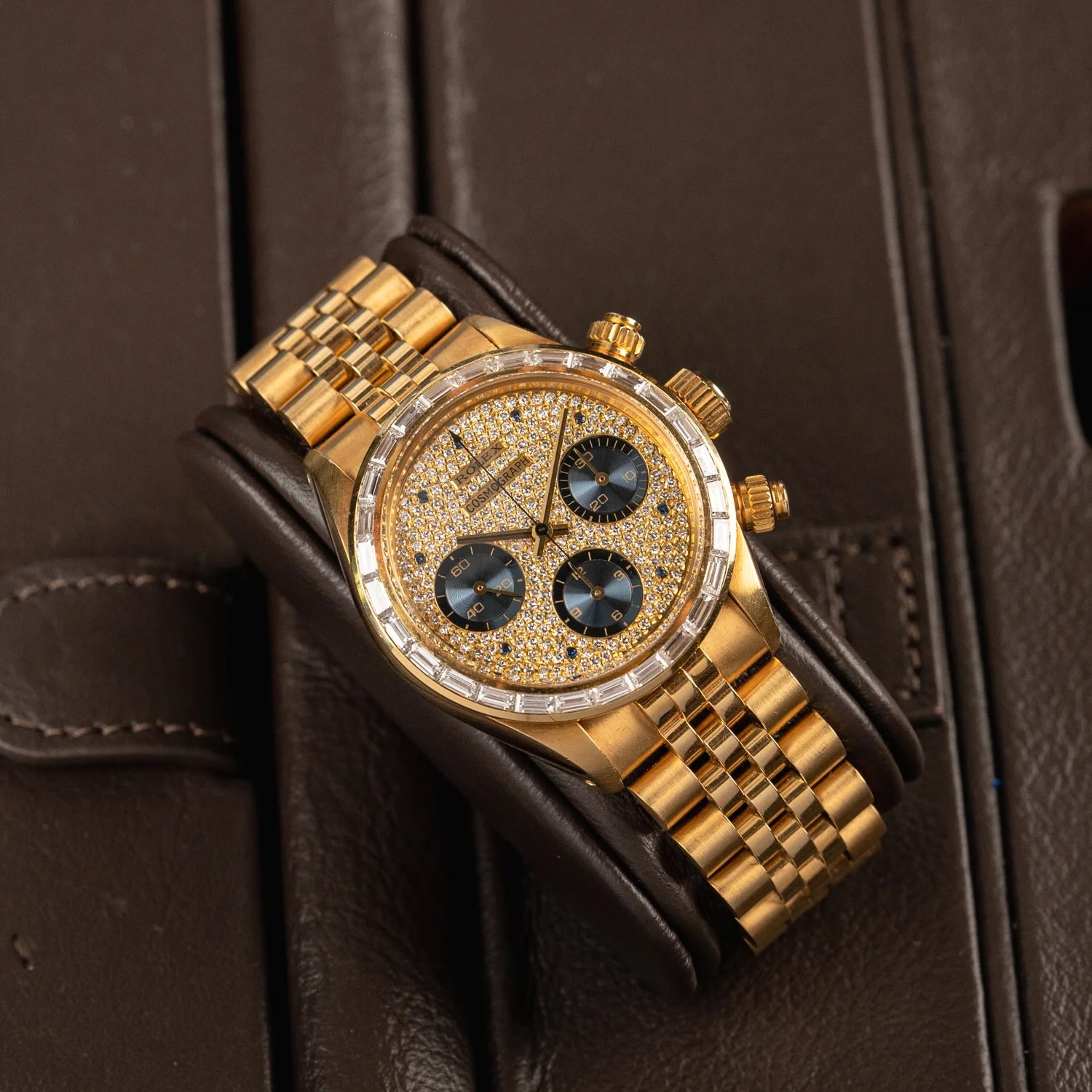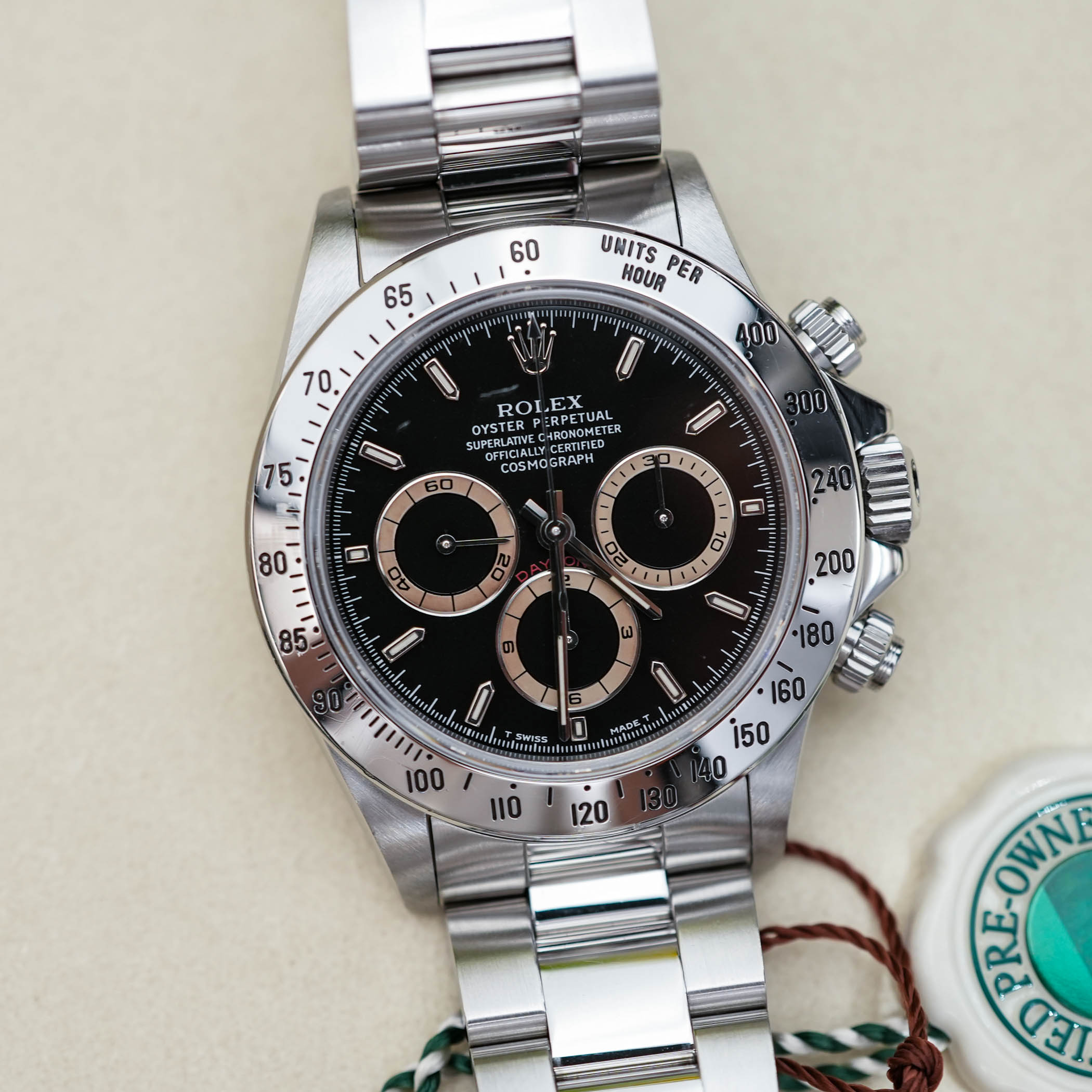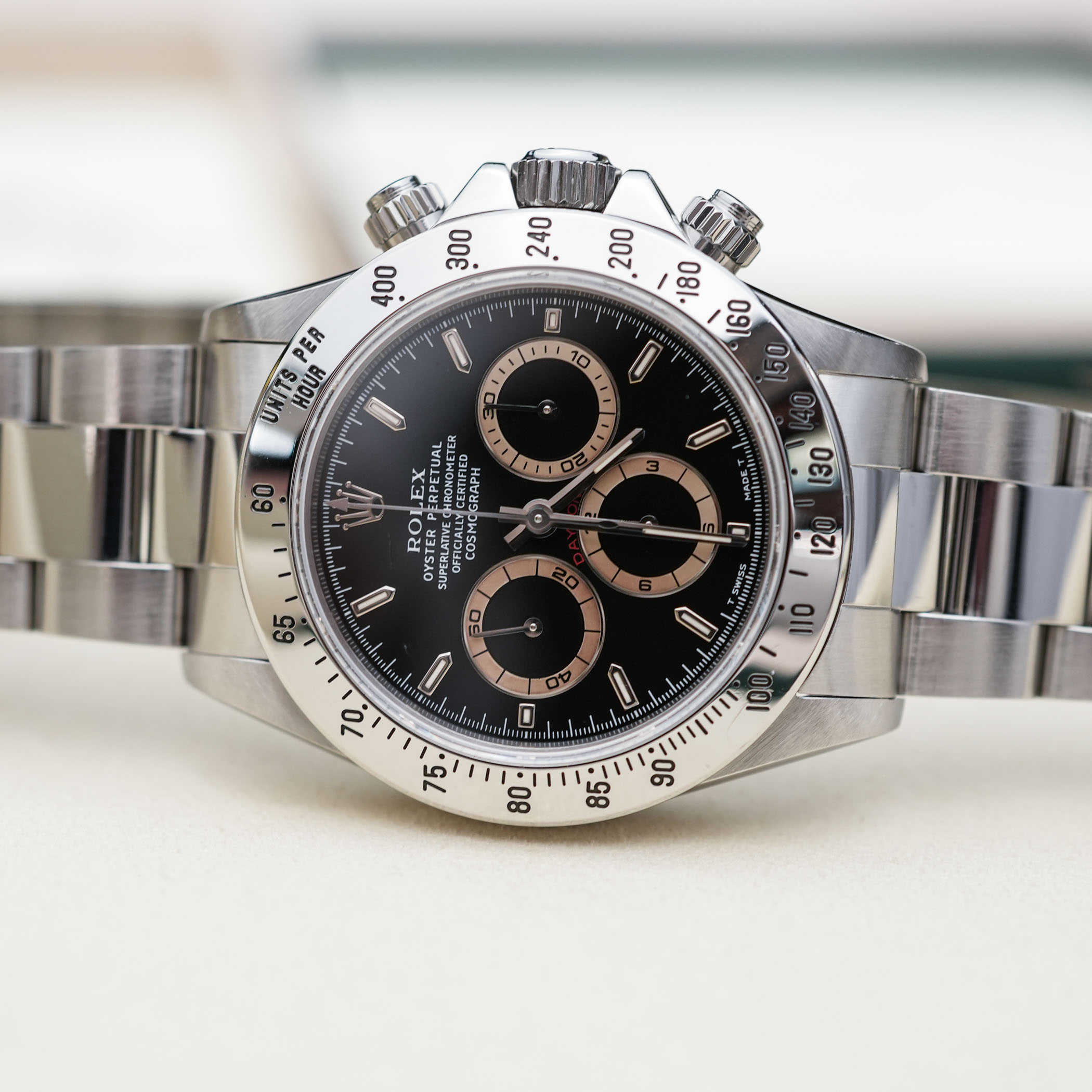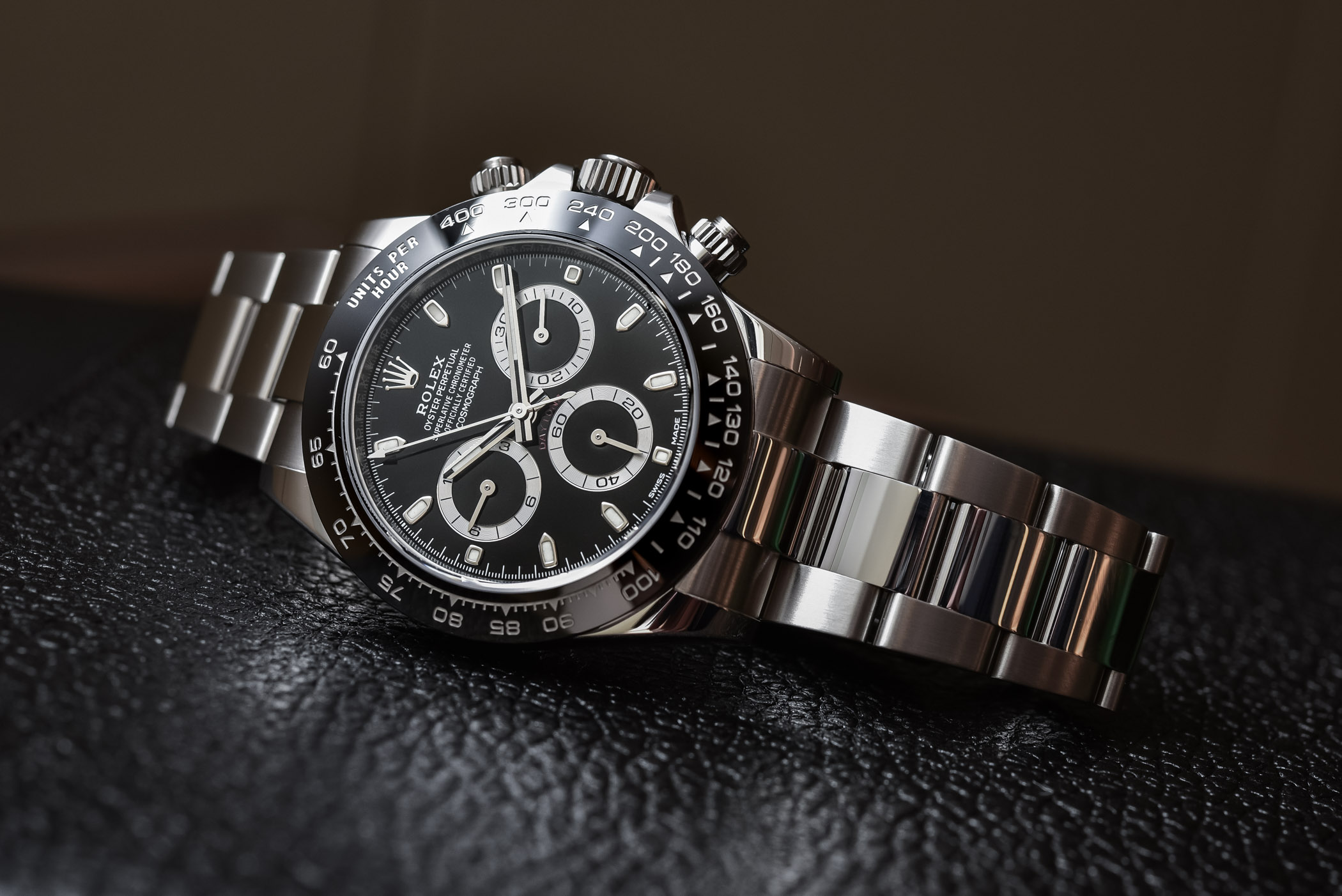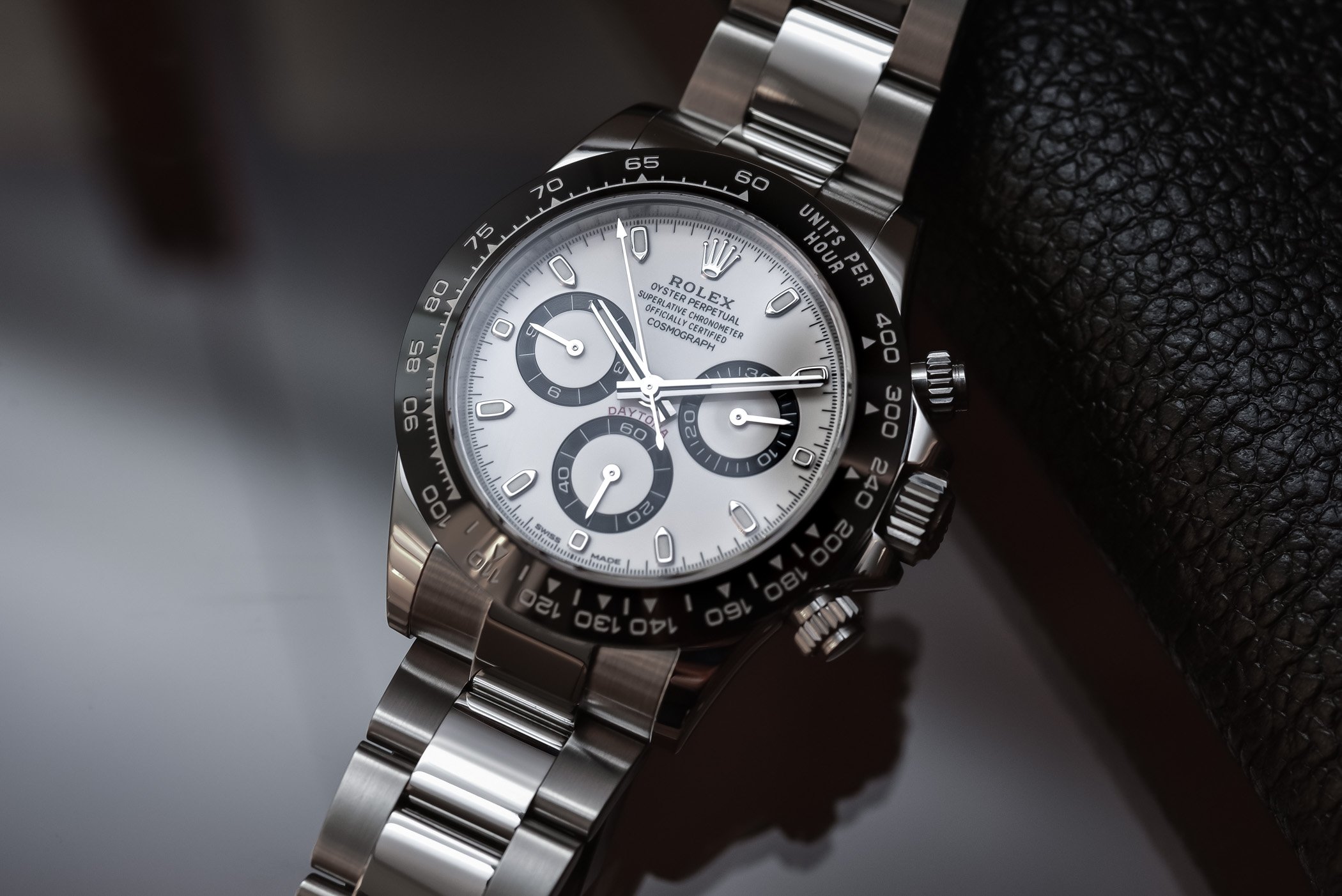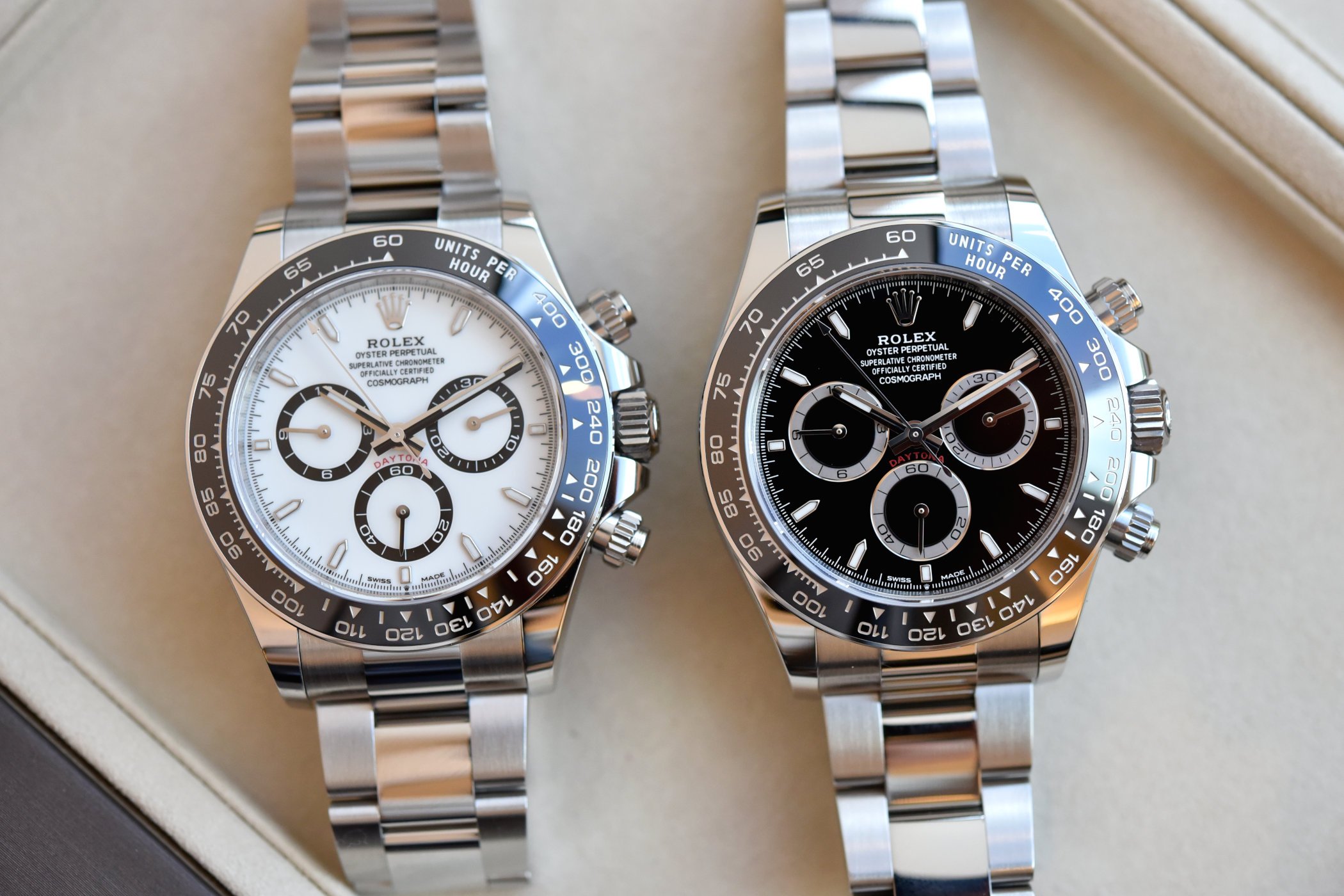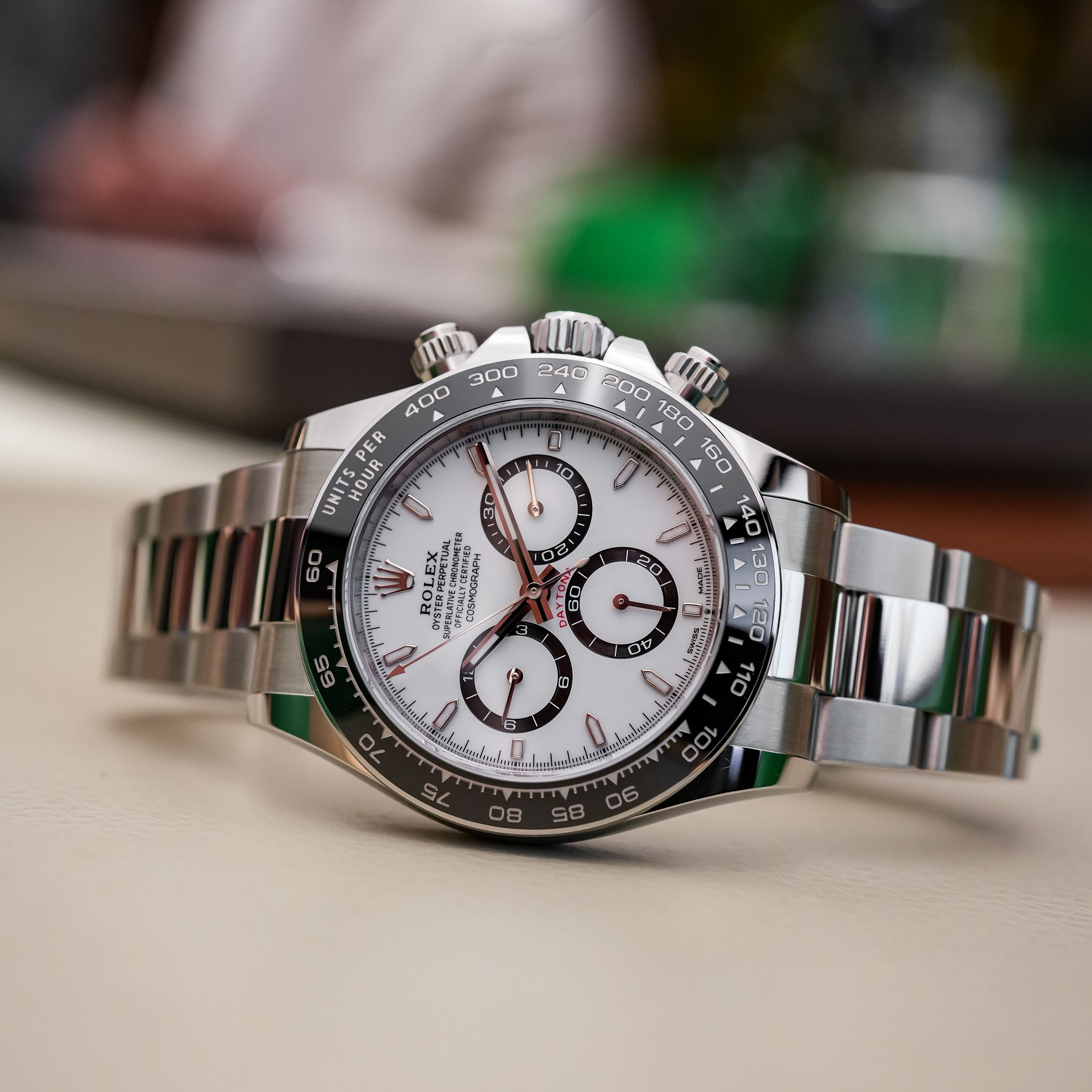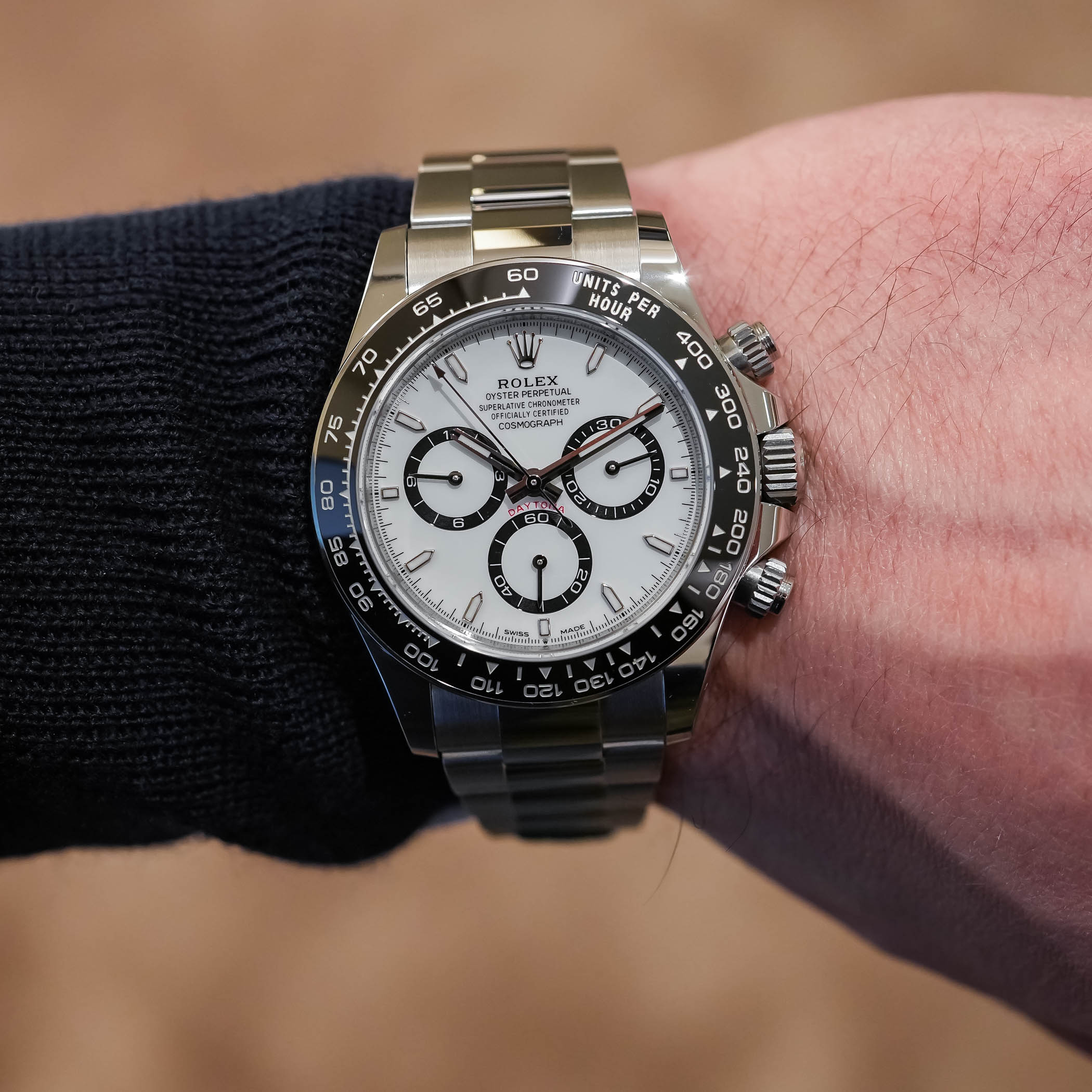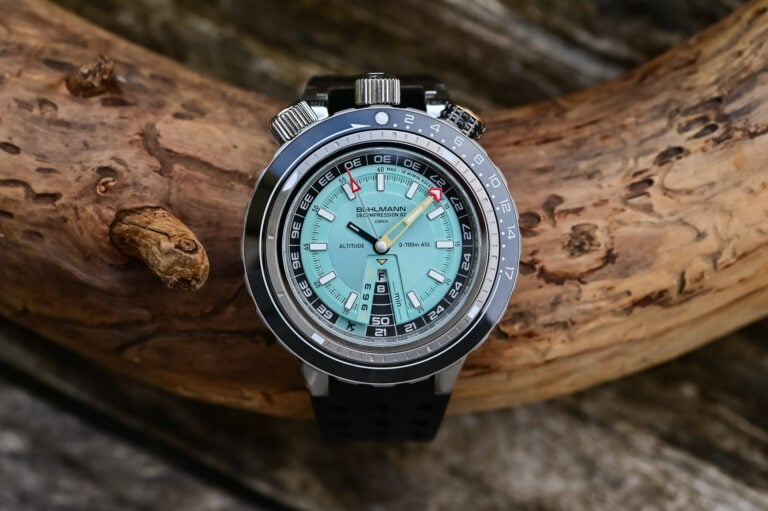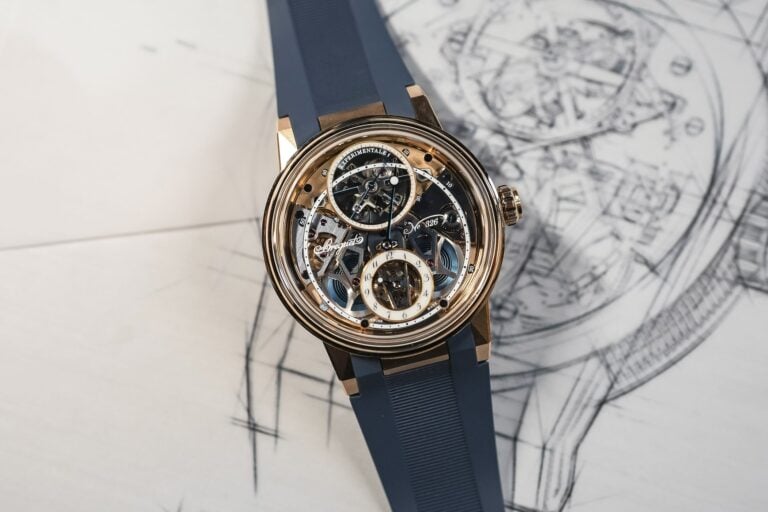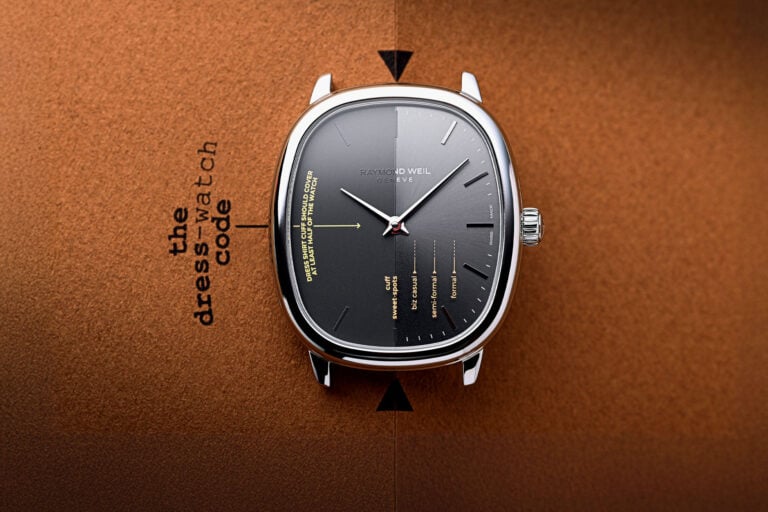The History of the Rolex Daytona, the Emblematic Racing Chronograph
The Cosmograph Daytona is a legend of chronograph and racing history, with an unrivalled popularity.
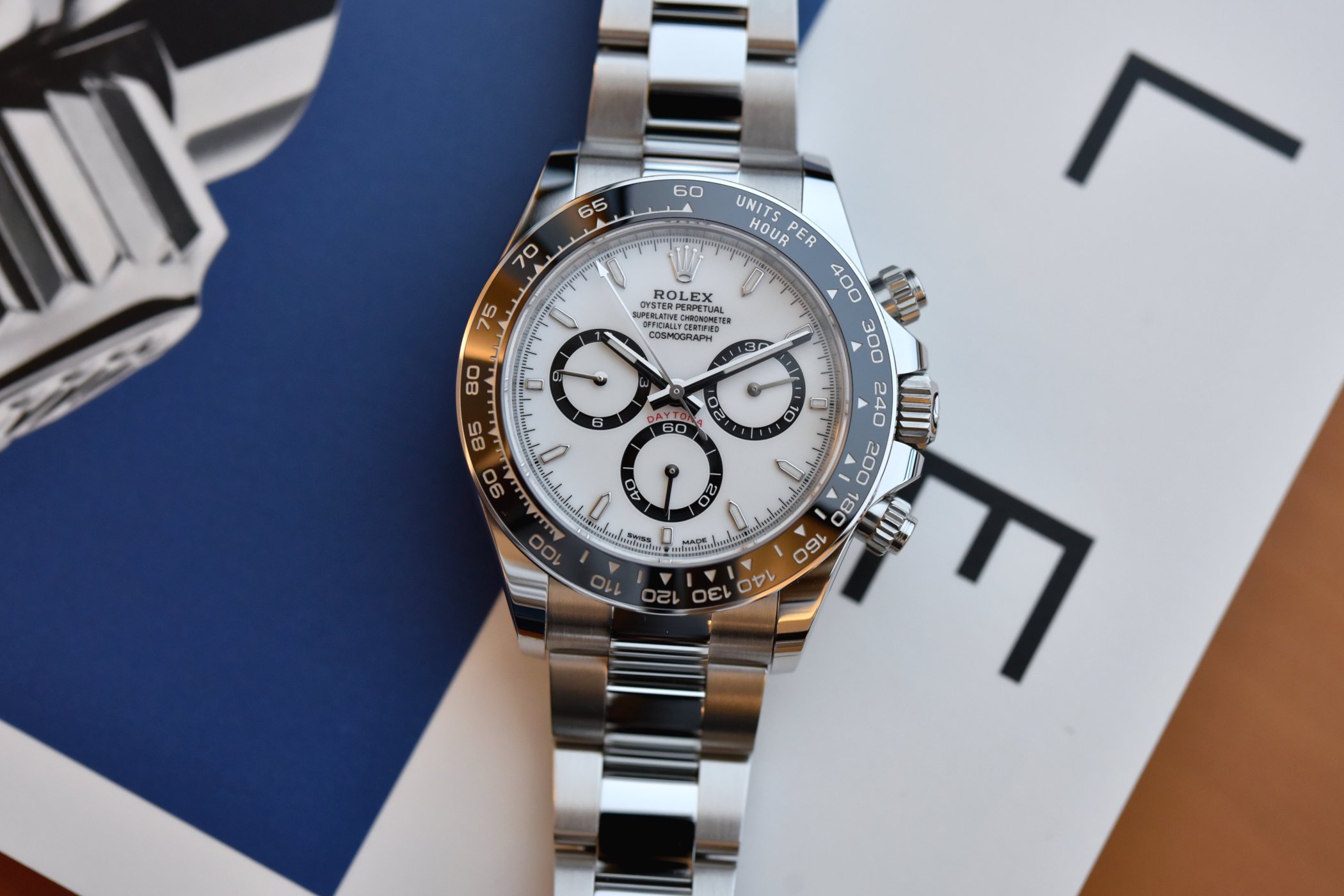
Rolex arguably has more iconic models than any major watchmaker, from the Submariner to the Datejust to the Explorer (and many more). Still, the Cosmograph Daytona has become something of a unicorn and a collector’s dream in the last couple of decades. At a time when the brand’s steel sports watches were still readily available at authorized dealers, the Daytona (particularly the steel model) was already nigh impossible to find – even though it wasn’t always like this. The chronograph remains highly desirable today and long waitlists are required (and could extend indefinitely), but those who wear them can enjoy a slice of history and horological excellence. Surprisingly, the Daytona wasn’t popular at launch and took decades to really find an audience. The Rolex Daytona concept was born in the 1930s, reached fruition in the 1960s and is among the most important chronographs in watchmaking today.
About the name Cosmograph Daytona
The first Daytona wasn’t actually called the Daytona, but simply the Cosmograph in 1963. The following year, Daytona was added to the dial, but Cosmograph also remained and is still printed on dials today. Let’s first unwrap the name… Cosmograph is a strange word. As you know, the word chronograph derives from the Greek terms chronos (time) and graph refers to grafos (to write), explained by the history of this type of watch, which started as an instrument writing down elapsed times on a sheet of paper – the circa-1821 instrument of Nicolas Rieussec. Cosmograph is not an invention of Rolex. It combines the words Cosmo (world) and graph or grafo (to write), but also a reference to Cosmography, the science of mapping and, in modern days, the effort to determine the large-scale features of the observable universe. Rolex started to use the word Cosmograph on the reference 6062 Triple Calendar Moonphase Stelline up until its discontinuation in 1956-1957 – where the name made a lot of sense considering the complications. Why this name was brought back several years later on the brand’s newly created racing chronograph remains a mystery. After all, the name Rolex itself doesn’t mean anything special…

The name Daytona is, on the other hand, far easier to understand since the watch was designed as a racing chronograph. Back then, the Daytona Beach race track was considered one of the most prestigious in the world and in 1966, Rolex became the official timekeeper of the Daytona International Speedway. From then on, the names Cosmograph and Daytona were found on the dials – either at 12 o’clock or, most of the time, around the 6 o’clock counter.

However, as an anecdote, the watch was initially called Le Mans, referencing the prestigious 24 Hours of Le Mans. An early 1963 advert shows the “Le Mans” watch before Rolex moved to call it the Daytona after closing the deal with the 24 Hours of Daytona. Funnily enough, Rolex then became the official timekeeper of the French race and even released a special edition of the Cosmograph Daytona, paying tribute to the 100th edition of the 24 Hours of Le Mans.
Ref. 6239 – The Origins of the Cosmograph/Daytona (1963 – 1969)
This model was the successor to ref. 6238, often referred to as the “pre-Daytona” chronograph. Two big visual differences separated the models – the tachymeter was on the dial of ref. 6238 and engraved on the outer bezel of ref. 6239 (where it remains today), and ref. 6239 was the first to have separate colours for the dial and sub-dials (panda and reverse panda styles).

Most 6239 bezels had a base 300 tachymeter (to measure speeds up to 300 kilometres per hour), which soon changed to a base 200 in subsequent models and is 400 today. Before the Cosmograph, Rolex chronographs were very monochromatic and less sporty overall (ref. 6238 had all black or silver dials, for example). So, you can say that ref. 6239 forever contemporized the brand’s chronographs. As a side note, it was the Omega Speedmaster that first brought the tachymeter to the external bezel in 1957 with the CK2915.
Ref. 6238 was produced in small numbers from 1962 – 1968, so it lived alongside the Cosmograph/Daytona for many years. It was very influential to ref. 6239 in many ways – the case size of 36mm, baton hands (after its early dagger-hand days), tri-compax dial layout and sub-dial size, pump pushers and crown are nigh identical between the 6238 and 6239. It should be noted that many consider a case diameter of 37mm for ref. 6239 with the external bezel. Although the tachymeter was on the 6238 dial, the telemeter of earlier chronographs had been removed for a cleaner and more legible design, further establishing the formula moving forward with the Daytona.

Early 6239 models had a “double Swiss underline” dial, otherwise known as the Le Mans, in 1963. A line under Cosmograph meant tritium was used for lume (replacing radium), although some radium may have still been present. Swiss was also printed twice at the bottom, but one was almost impossible to see as it was tucked under the rehaut.

Ref. 6239 was among the few Daytona models with pump-style pushers like ref. 6238, as most subsequent models adopted screw-down pushers and crowns for better water resistance. In the later part of 1964, Daytona was added to the dial underneath Cosmograph at the top, and the font size tended to vary between small or a bit stretched out for “Big Daytona” and “Small Daytona” dials. On late 6239 dials, Daytona moved above the 6 o’clock sub-dial in curvature. Some dials didn’t get Daytona at all as things became a bit scattershot. Cosmograph was printed just below ROLEX at 12 o’clock regardless, so technically, every Daytona is a Cosmograph, but is every Cosmograph a Daytona? An argument for another day (but the answer is yes).

The 6239 was offered in stainless steel or yellow gold, all with acrylic crystals. The Oyster bracelet became standard for Daytonas in 1965. A couple of rare dial variances were made as well. “Baby Blue” had light blue Daytona text, while “Cherry Red” had light red Daytona text on a black or silver dial. These are certainly prized by collectors today. And YES, there are also the Paul Newman dials, but those will be discussed further down in its own section.
Valjoux 722 Movement
Rolex used a base hand-wound Valjoux 72 column-wheel movement for the Daytona and upgraded it with a Breguet overcoil and free-sprung regulator (calling it calibre 722). This was used in the prior 6238 as well. It had a relatively slow beat rate of 18,000vph (2.5Hz), 17 jewels and a 48-hour power reserve. There was a 30-minute counter at 3 o’clock, a 12-hour counter at 6 o’clock and small seconds at 9 o’clock. This base chronograph calibre was the Daytona workhorse for decades.

The Daytona Ref. 6240 (1965 – 1969)
This model debuted soon after ref. 6239, and the two were produced simultaneously until 1969. The major difference here was the change to the screw-down pushers and crown, which increased water resistance to 100 metres, putting the Daytona on the same level as the 1960s Submariner, Explorer and GMT. This change eventually led to the “Oyster” designation on the dial. The sporty vibe of the Daytona was now more than skin deep. Daytona text was again under Cosmograph, like ref. 6239 with “Big Daytona” and “Small Daytona” variants in white or silver/blueprint. Curved Daytona print above the 6 o’clock sub-dial was skipped with ref. 6240 and reappeared in the next model. Images below by image by Phillips.
The most significant visual change from ref. 6239 was the use of a black acrylic bezel insert for the tachymeter with white numerals (basically the reverse of the prior silver (steel) bezel with black numerals). The same hand-wound Valjoux 722 from ref. 6239 again powered ref. 6240.
The Daytona Ref. 6241 (1966 – 1969)
This model blended ref. 6239 and ref. 6240 into another Daytona option – pump pushers like 6239 and black acrylic bezel insert like 6240 – and Daytona was most often printed in curvature above the 6 o’clock sub-dial (usually in silver) with “Cherry Red” also available in limited numbers. Ref. 6241 was mostly aimed at the American market, and only around 3,000 were produced in stainless steel or yellow gold (and less than 300 of those in 14k yellow gold).

A highly collectable variant is called the John Player Special, with a black and yellow gold colour pallet to match the John Player Special Formula 1 team colours. A gold case and bracelet were combined with a black dial, gold sub-dials, and a black acrylic bezel insert. Daytona was printed in gold and curved above the 6 o’clock sub-dial. An exceptionally rare Paul Newman variant of this was also made, but more on that later.

In 1969, ref. 6239, 6240 and 6241 ceased production as the next Daytona generation launched in 1970.
The Daytona Ref. 6262 and 6264 and Calibre 727 Valjoux (1970 – 1972)
These two references were short-lived in the early 1970s and were sequels to prior models. For example, ref. 6262 was an update to ref. 6239 with a steel tachymeter bezel, while ref. 6264 was an update to ref. 6241 with a black acrylic bezel insert. Daytona was almost always printed in curvature above the 6 o’clock sub-dial on both models. Ref. 6240, with its screw-down pushers and crown, was passed over for now, so Rolex was back to pump pushers for a couple of years as water resistance wasn’t yet prioritized for the car racing-inspired chronographs.


These are considered (short-lived) transitional Daytona models that introduced the next movement, the Rolex calibre 727, still based on the Valjoux 72. The big change was an increased frequency to 21,600vph (3Hz), while it retained 17 jewels and a 48-hour power reserve.
The Daytona Ref. 6263 and 6265 (1971 – 1988)
The next two models, both introduced in 1971, are among the longest-running Daytona references (17 years) and arguably the best known. Or most famous. Whatever you want to call them, they’re truly legendary in the Rolex portfolio with such a long production run and now permanent addition of screw-down pushers, which was generally unheard of at the time outside of speciality pieces. They housed calibre 727 from the transitional models and only ref. 6264 hung on into 1972 (ref. 6262 was discontinued in 1971). With the screw-down pushers and crown commitment, these new references represent the beginning of the modern Daytona.


The models were otherwise similar to earlier ones, most notably ref. 6240, which first introduced the screw-down pushers and crown (and had Oyster printed on a relative handful of dials). Ref. 6263 and 6265 permanently adopted Oyster on the dials under ROLEX. Ref. 6263 used the black acrylic bezel insert like ref. 6240 and 6241 (and the short-lived 6264), while ref. 6265 had a metal bezel (steel or gold) like earlier models. For collectors, there are many subtle dial variances to choose from. T Swiss T at the bottom (for tritium lume) and no Daytona on the dial is known as a pre-Sigma dial. So, what’s a Sigma dial? That has the Greek sigma (?) symbol on either side of T Swiss T, which signifies the use of gold on the dial (usually white gold for indices, etc.). Sigma dials did not have Daytona text, either. Then there are the rare “Cherry Red” and “Big Red” dials, which had either light red or a thick, bright red Daytona printed in curvature over the 6 o’clock sub-dial. To confuse things, some Sigma dials were also “Big Red” dials, so they did have Daytona text. Like earlier Daytona features, things were a bit scattershot without strict guidelines.

As we entered the 1980s, 18k yellow gold models started getting “Superlative Chronometer Officially Certified” on the dial under Rolex and Oyster, along with a proper certification document. Curiously, the steel counterparts got neither the text nor the document, and it’s not entirely clear if steel Daytona 6263 and 6265 movements in any part of the 1980s were officially COSC-certified. Rolex hasn’t said.
The Daytona Ref. 6269 and 6270 (1984 – 1988)
This pair of 18k yellow gold Daytona models was bejewelled with diamonds on the dial and bezel. They’re both very rare and usually command seven figures among collectors. Only Rolex and Cosmograph are printed on gold plates under 12 o’clock, as Daytona is absent entirely. The difference between the two references is the diamond cut – 6269 has brilliant-cut diamonds, while 6270 has baguette-cut diamonds on the bezel. Of course, the diamonds replace the tachymeter. Two examples below were once for sale at Amsterdam Vintage Watches.
These final four-digit references really highlight the inconsistent and scattershot nature of the hand-wound Daytona era. Throughout this entire production timeline, references had dials with and without Daytona print, and it was a relative crapshoot whether Daytona was curved around the 6 o’clock sub-dial or printed below Rolex under 12 o’clock. Then there was “Big Daytona”, “Small Daytona”, “Cherry Red”, “Big Red”, and so on. Rolex does like to have fun and experiment. At the time, these anomalies were generally ignored. If the model happened to be a “Big Red” variant while a customer was looking, so be it. The bezel type, dial colour and reference number were the important factors. Only today do collectors prize the variations. Most surprising of all, this entire range of Daytona watches (1963 – 1988) just didn’t sell well. It’s fair to not only call them unpopular at the time but even flops. Hard to believe today.
The move to automatic, the Zenith Daytona Ref. 16520 (1988 – 2000)
This is the reference that truly represented the modern Daytona, not unlike the Explorer’s jump from ref. 1016 to ref. 14270. For the Daytona, this was an even bigger jump – the case went from 36/37mm to 40mm in diameter and gained a very different automatic calibre. The dial aesthetic, available in black or white, significantly matured as well, with a lacquered finish and sub-dials matching the dial colours with only their outer tracks having a contrasting colour. A sapphire crystal was now standard and the indices gained interior points for a bit of style, and all bezels were metal (dropping black acrylic). This was the first Oyster Perpetual Daytona with the automatic calibre, which was reflected in new dial text under Rolex. In fact, the dial got a bit text-heavy with five lines at the top and Daytona above the 6 o’clock sub-dial in curvature (in red on both black and white dials).
Early variants got nicknames such as the “floating Cosmograph” as that text was much lower than the four lines above it. It was also called the “inverted six” as the 6 on the 6 o’clock sub-dial was upside down, resembling a 9. Early on, Rolex briefly removed Officially Certified from “Superlative Chronometer Officially Certified” to bring dial text to four lines at the top and spaced Cosmograph consistent with the other text, all for a cleaner look. Few of those were produced and are sought by collectors today. There were also two white dial variants that had subtle differences in lustre and dial print, with one resembling porcelain, but neither was separated by reference number or name. It was a curious anomaly that was somewhat ignored at the time. Black Daytona dials from the mid-1990s eventually degraded, with the sub-dials taking on a brownish colour (not unlike tropical dials). These became known as Patrizzi dials, named after Osvaldo Patrizzi, who was the founder of the auction house Antiquorum Auctioneers and first called attention to the patina. It was an unintended reaction of the varnish coating against the metal sub-dials.
Ref. 16520 is the model that finally made the Daytona popular, and it’s gained a huge following ever since, making it the most sought-after new Rolex watch today. Soon after launch, the Oyster bracelets got polished centre links for the first time to create a more luxurious aesthetic, positioning the Daytona as more than “just a tool watch”. The clasp was modernized as well. This reference was the first Daytona to have a two-tone yellow gold/steel “Rolesor” design (ref. 16523), and all gold variances got their own reference numbers for the first time. An example is ref. 16528, which was yellow gold on an Oyster bracelet.
Calibre 4030 (modified El Primero)
It’s a bit surprising that it took this long for the Daytona to become an Oyster Perpetual with an automatic movement, given the much earlier adoption by other models. That said, developing an automatic chronograph calibre is very challenging, with the first ones debuting in 1969. It was the horological equivalent of the moonshot. So, calibre 4030 wasn’t yet an in-house design and was based on Zenith’s Calibre El Primero (calibre Zenith 400). It wouldn’t be until 2000 that Rolex developed its own in-house chronograph with calibre 4130. As such, this reference is known as the Zenith Daytonas.

Zenith’s movement was considered the best Swiss chronograph at the time, so the Daytona 16520 was in good hands. Of course, Rolex wasn’t satisfied with simply installing another watchmaker’s movement, so they stripped it down and made around 200 modifications, replacing half of the original components in the process. Major additions included a larger free-sprung Glucydur balance and Microstella regulating system, and the date complication was also removed. The frequency was reduced from a high beating 36,000vph (5Hz) to 28,800vph (4Hz) to keep it consistent with Rolex’s COSC-certified portfolio. The 31-jewel column-wheel movement had a 54-hour power reserve, up from the hand-wound calibre’s 48 hours, and was arguably the best chronograph calibre of its day (depending on your view of 5Hz vs 4Hz).
The move to in-house, the Daytona Ref. 116520 (2000 – 2016)
At an initial glance, this next reference looked much like the last, but look closer and there are significant differences. For starters, this is the first Daytona with a truly in-house Rolex calibre, which changed the order of the sub-dials. The small seconds moved from 9 o’clock to 6 o’clock, trading places with the 12-hour counter, and all sub-dial placements were slightly altered (rather subtle). As of 1998, tritium was replaced entirely by Rolex to LumiNova, so all ref. 116520 models reflected that change as well. Gold variances again got their own reference numbers, and the white gold model (ref. 116519), which had specially coloured dials and matching lizard straps, became known as the “Beach Daytonas”. These dials included yellow or pink mother-of-pearl, blue lacquer and green hardstone. The Zenith Daytonas remain more collectable than this first round of in-house models, mainly due to the dial variances and the movement itself, so ref. 116520 in standard form is somewhat of a bargain on the second-hand market (if you consider a starting price north of $20,000 a bargain, of course).
Calibre 4130 in-house
Five years in development, Rolex’s first in-house, 44 jewels, vertical clutch, column-wheel chronograph had a streamlined design with 20 per cent fewer parts than the previous calibre 4030. Rolex finally had a thoroughbred Daytona, and it certainly didn’t disappoint. It maintained the 28,800vph (4Hz) frequency but increased the power reserve to 72 hours (from 54 hours with calibre 4030). The Parachrom hairspring debuted with this calibre and offered additional resistance to shocks and temperature, and of course, it was COSC-certified with an accuracy of -4/+6 seconds per day. The automatic rotor used ceramic bearings for the first time, and a vertical clutch replaced the horizontal/lateral counterpart of the 4030, eliminating backlash (small movements with the chronograph hands during starts/stops) for a more accurate stopwatch.
Cerachrom Bezel
While all metal bezels ruled Daytona models since 1988 (after discontinuing black acrylic), ref. 116xxx brought the black bezel back in 2011 with ceramic, otherwise known as Rolex Cerachrom. Initial ceramic models came with leather straps but were soon presented with different options (gold, bracelets, etc.). This was just a couple of years shy of the Daytona’s 50th anniversary, but for that, Rolex released ref. 116506 – a platinum model on a platinum Oyster bracelet with a brown Cerachrom bezel and blue dial known as the Platona. You’ll need deep pockets if you find one.


The Steel/Ceramic Daytona Ref. 116500LN (2016 – 2023)
The Daytona Ref. 116500LN went back to Daytona’s roots with a steel model with classic black or white dials reminiscent of the ref. 16520 and a black Cerachrom bezel like ref. 6263 with its aesthetically similar black acrylic. These steel models represented the shift to the Daytona’s unicorn status. They had already been difficult to obtain and were now nigh impossible to find at retail. This steel ceramic reference remains the most popular contemporary Daytona model and also the most popular steel Rolex in general today.
60th Anniversary, The Daytona Ref. 126500 (2023 – Present)
The most recent model has undergone another significant redesign, both inside and out. This hasn’t happened since 1988 with ref. 16520 (the Zenith Daytona) when the case was enlarged to 40mm and received an entirely new automatic calibre. The Rolex Daytona Ref. 126500 retains the 40mm diameter but has a more refined case with softer lines and tapered lugs and a noticeable reduction in thickness. The ceramic bezel also has a metal ring around the perimeter (that’s actually part of the case itself), calling back the look of the earlier acrylic inserts. The classic Oyster bracelet received a redesign with a tapered shape to the outer links to integrate better with the new lugs, along with improved articulation to remove visual gaps when on the wrist. The crown guard is now longer and better integrated as well. All of the changes are relatively subtle and won’t jump out to the layman, but they’re a big deal to Rolex connoisseurs. A lot of the redesign has to do with the new calibre, which allowed for the thinner case and flatter caseback – the case is now 11.5mm in height, which is a 0.5mm reduction. Subtle, but tangible. And the platinum model (ref. 126506) received a first for any Daytona: an exhibition caseback.
The dial has a host of changes as well. The sub-dial interiors are larger, making the rings a little thinner, while the 18k white gold indices are a bit smaller, and the overall placement/proportions have been modified. The snailed sub-dials from ref. 116520 are now vertically brushed against a sunray-brushed main dial. The hour and minute hands are a bit wider, and Super-LumiNova has been replaced with Rolex’s own Chromalight. While a lot has changed, the overall Daytona vibe remains intact and the visual differences are again subtle.

Calibre 4131
Rolex debuted its second in-house chronograph calibre with this reference that features its new, patented nickel-phosphorus Chronergy escapement working in tandem with the paramagnetic blue Parachrom hairspring. This allows for greater efficiency, accuracy and magnetic resistance, making calibre 4131 a Rolex Superlative Chronometer with an accuracy of +/-2 seconds per day (well within COSC standards of -4/+6 seconds per day). A tiny Rolex coronet under the 6 o’clock index confirms that the watch carries the next-generation calibre. The movement is decorated with Rolex Côtes de Genève and an openworked gold rotor for the platinum transparent back. Rolex’s version of the Geneva stripes differs from the norm, with polished grooves between the bands, creating subtle yet hard lines within the decoration.
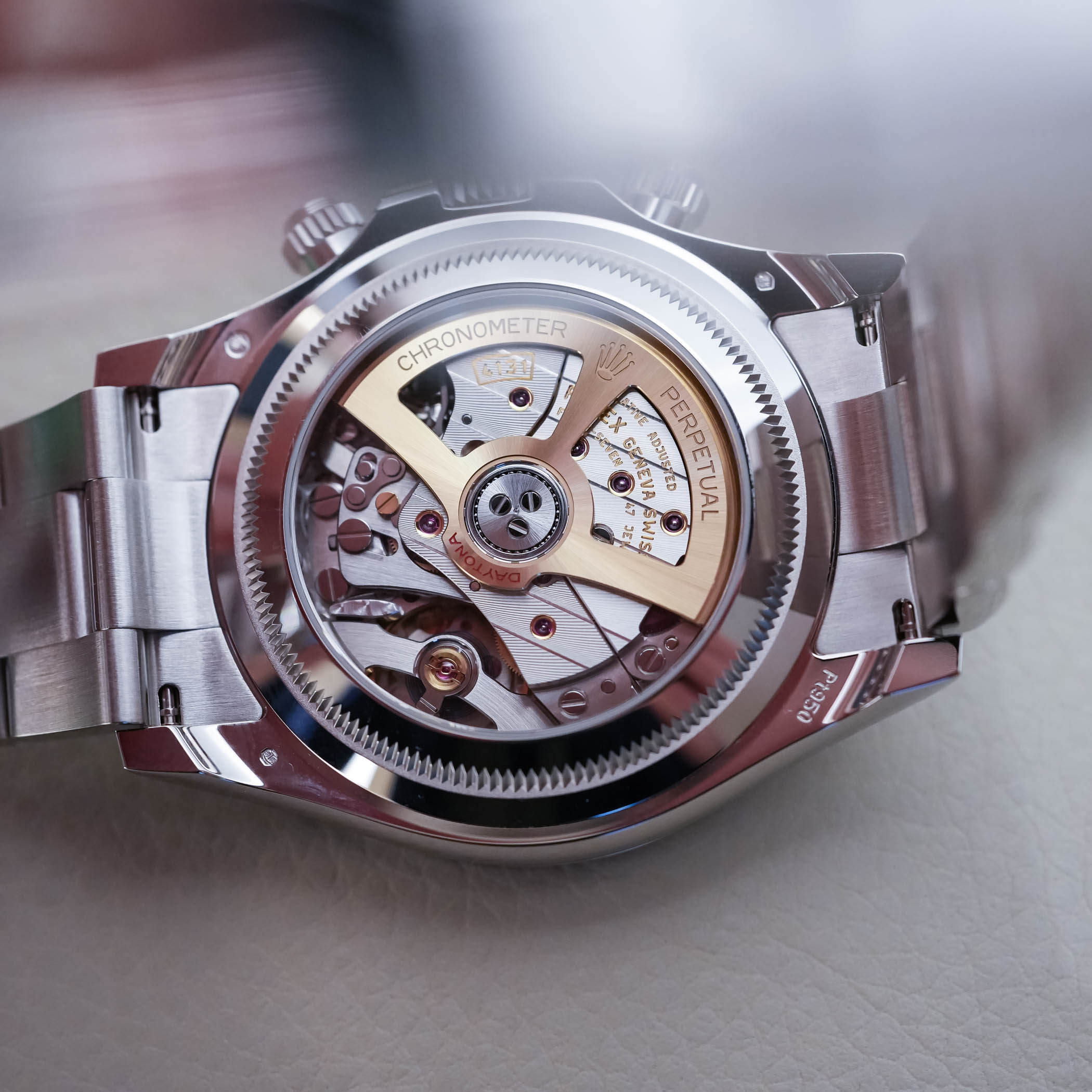
The Paul Newman Connection
On rare occasions, a watch model gets intimately tied with a celebrity, and they’re forever linked. A couple of examples are Elizabeth Taylor and Bulgari’s Serpenti and Steve McQueen and TAG Heuer’s Monaco. With Rolex’s Daytona, that celebrity is Paul Newman. Although an Oscar-winning actor, Newman was also known as a racecar enthusiast, winning four national championships in Sports Car Club of America (SCCA) races with the Bob Sharp Racing Team (driving Datsun/Nissan). His 1969 film, Winning, brought attention to both racing (as his character Frank Capua vies to win the Indianapolis 500) and, ultimately, the Daytona. His co-star (and real-life wife) Joanne Woodward had gifted him a 1968 Daytona ref. 6239 with an “exotic dial” and Drive Carefully Me engraved on the caseback. The Daytona and particularly the limited Art Deco exotic dial became synonymous with the actor as he wore it frequently, although the two weren’t linked by collectors until the 1980s. After his death, the watch sold at Phillips auction house for a record $17.8 million in 2017.

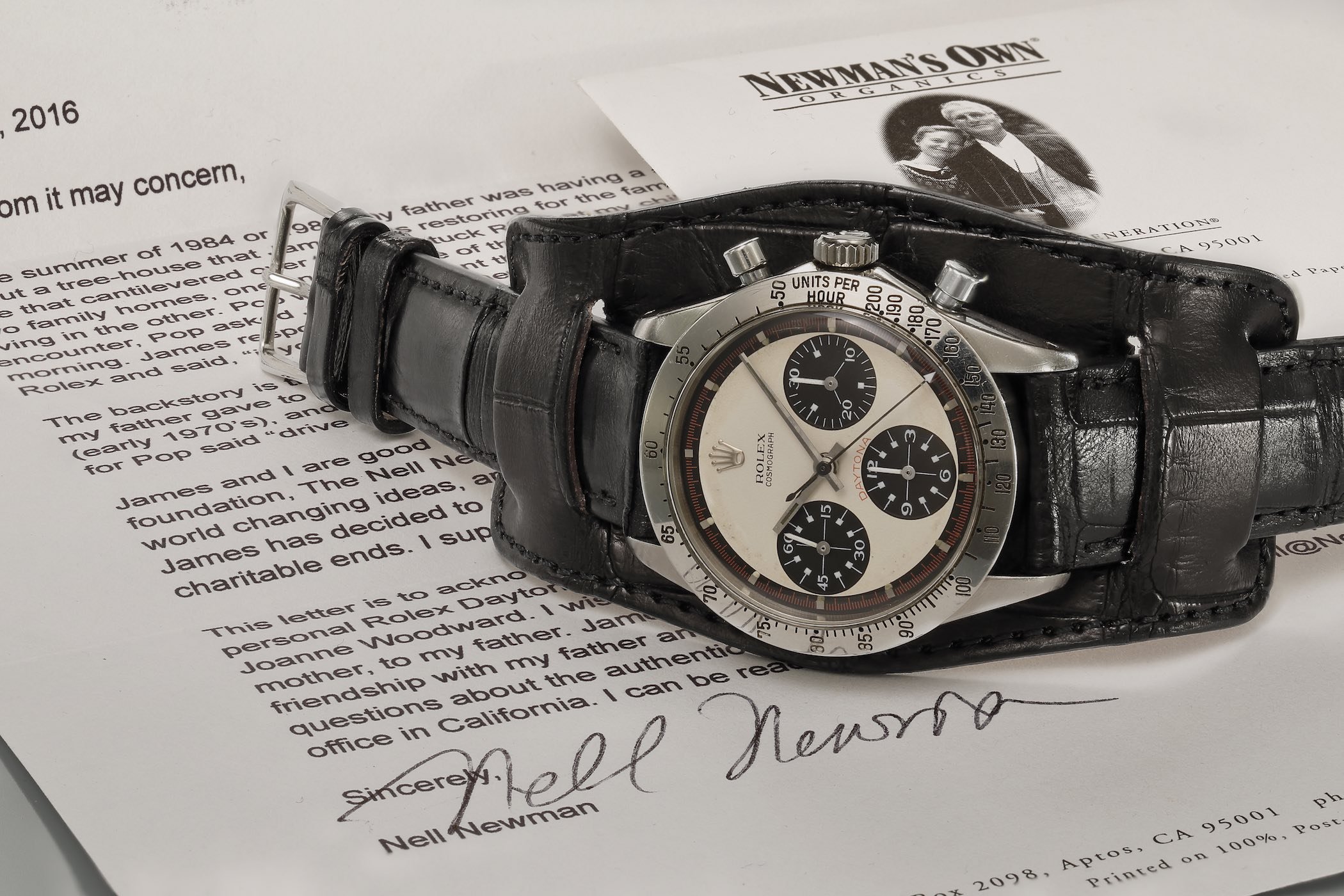
The Exotic Dials, a.k.a the Paul Newman Daytonas
The “exotic” Art Deco dials associated with Newman were unpopular at the time and horrible sellers. A small number were produced and are recognized mainly by the sub-dials with unusual Art Deco font and tiny square indices. Small blocks within the outermost minute/chrono seconds track replaced the traditional Daytona indices and original pieces came with panda and reverse panda colours (white dial with black sub-dials or black dial with white sub-dials). The outer track had red print and was a separate colour from the main dial (matching the sub-dials), unlike the uniform dials on traditional models and were also known as three-colour dials. Newman’s famous model was ref. 6239 with a panda dial. Six Daytona references were ultimately made with Paul Newman dials – 6239, 6241, 6262, 6263, 6264 and 6265 – so production ceased in the 1980s.

Italian Collectors
Interestingly, it wasn’t until the 1980s that these became popular when a photograph of Newman with his Daytona was featured on the cover of an Italian magazine. That association with both the Daytona and specific exotic dial fueled interest, and its popularity steadily climbed, becoming known as the Paul Newman Daytona around 1988. Models came in steel and sometimes gold, such as a very rare ref. 6264 in yellow gold with a black or champagne dial (in panda and reverse panda styles). Later references 6263 and 6265 in steel changed a bit in appearance by dropping red print for a two-colour dial. Unfortunately, Paul Newman dials are among the most faked today, so due diligence is required when considering a purchase, especially since Rolex models themselves are among the most counterfeited of any premium brand.
It’s hard to over-emphasize how incredible the fortunes of the Paul Newman Daytona changed over the decades, going from a sales flop that often sat for years on store shelves to one of the most desirable vintage watches today. At the time, Rolex outsourced dial manufacturing to Singer, who actually made similar “Paul Newman” dials for other brands such as Vulcain. Only the Paul Newman Daytonas, however, reached cult status as the others were all but forgotten. Does any of it make sense? No, but that’s what makes the world of watch collecting so fascinating (and even infuriating), and the Rolex Daytona stands at the top of the mountain today, whether vintage or new.


